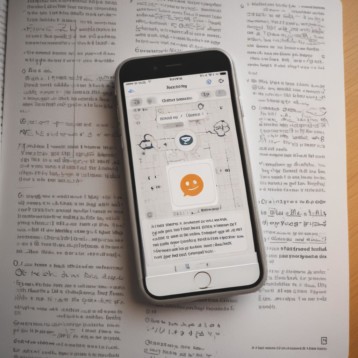T-Mobile
T-Mobile showcased their latest smartphone – the “MDA Compact IV”. This Windows Mobile 6.1 model, which will hit the European market next month at an estimated cost of $169, supports a 3 Mega Pixel camera with auto-focus, has 4GB of on-board flash memory, and a 640×480 resolution touch-sensitive display with 3D graphics. This phone also supports the High-Speed Downlink Packet Access (HSDPA) protocol, which allows for higher data transfer speeds (7.2 Mbps), as well as a GPS, WiFi, and Bluetooth 2.0. Unfortunately, only a glass-cased dummy of this handset was presented at the fair…
ASUS
|
Following their successful line of “Lamborghini”-inspired laptops, ASUS launched the “Lamborghini ZX1” phone. This touchscreen device runs an ASUS-enhanced version of Windows Mobile 6.1 that includes “Multi-Home” 3D UI, which among other features, allows users to switch between a variety of offered home-screens. The ZX1, features a completely flat display that is integrated into the housing, is powered by a 520MHz Qualcomm processor, and has HSDPA support, in addition to a GPS, WiFi, and Bluetooth. This model will most likely become available this summer, in Lamborghini’s traditional black and yellow casings, at a starting price of about $1,000.
The ZX1 may have stolen the spotlight from the many other ASUS smartphones showcased at CeBIT, but another model which caught our eye at is the “P560”. This sleek-looking 3G handset sports a 2.8-inch 240×320 TFT touchscreen and offers support for tri-band WCDMA, as well as quad-band GSM networks, along with 3.6 Mbps HSDPA, WiFi, Bluetooth, GPRS, and EDGE capabilities. This model also runs the newest Windows Mobile 6.1 operating system and features 256MB of flash memory and 128MB of SDRAM, and the ZX1 has two built-in cameras – a 3MP camera with auto-focus and a VGA camera for video calls.
Samsung
|
Samsung showcased an interesting handset based on Windows Mobile 6.0 Professional, named i780. This model comes with a full QWERTY keyboard and sports a 2.55-inch TFT touchscreen, which is capable of displaying 65K colors at a 320×320 resolution. The i780 comes with tri-band GSM connectivity, 3G/HSDPA support, WiFi, Bluetooth, GPRS, and EDGE technology for increased data transmission rates and improved data transmission reliability. The device also includes GPS and Assisted-GPS (AGPS) support, in addition to two built-in cameras, one of them a 2MP. The phone also features a finger mouse, which according to Samsung allows users to surf the web, use email and instant messaging with exceptional ease. The i780 is powered by a standard Li-Ion battery, which provides up to 7 hours of talk-time or 400 hours of stand-by time. This model is already available for purchase at a price of about $850.
The company also unveiled a smaller “i200” model, which operates Windows Mobile 6.0 Standard and comes with a 2.3-inch TFT display with 240×320 resolution. This 3G handset allows users to browse the web, send emails, and use instant messaging, and features a 2MP camera, Bluetooth 2.0 with A2DP, and USB 2.0.
One of the more notable smartphone models introduced by Samsung this year is the “G400 Soul” – a double-sided 2.22-inch touchsreen integrated device, which with an open folder reveals a traditional cell-phone keyboard and an internal display. Through the TFT touchscreen, users can control a variety of applications, including the FM radio, MP3 player, camera and photo album, and receive SMS and other notifications. Another interesting feature is the built-in 5MP camera, which comes with an automatic face detector, image stabilizer, and Wide Dynamic Range (WDR). This model, which supports a 7.2Mbps High Speed Downlink Packet Access (HSDPA), is scheduled to hit the European market this June.
HTC
|
HTC showed off its dual-touchscreen smartphone, which is integrated with the company’s unique “TouchFlo” technology. TouchFlo differentiates between finger and stylus touch. For example, users can scroll through a webpage by using a finger, highlighting parts of text with the same motion using a stylus. This technology also enables zooming in and out of on-screen images and is specially designed to be conveniently used with fingers – featuring a unique 3D touch cube interface that displays enlarged content. This handset also includes a slide-out keyboard and supports 3G, HSDPA, Bluetooth, GSM, GPRS, and EDGE. Dubbed “Touch Dual”, this device runs Windows Mobile 6.0 Professional, is powered by Qualcomm’s 400MHz processor, and is equipped with two cameras (one of them of 2MP) and a microSD card slot.
Vodafone
Vodafone Germany demonstrated its next generation of HSPA, which now delivers speeds of up to 28.8Mbps downlink – a significant increase from the previous 7.2Mbps transmission rates, which were the standard in most of the latest handset models presented at this year’s fair. The company also unveiled its new image search technology, which allows users to search items when providing an image (MMS) as input. Vodafone plans to embed the new search engine, dubbed “Otello”, into future smartphone models, which often lack a convenient keyboard. “It’s also very easy to use. If you see something – a historical building in a new city, an unfamiliar car model, a book or CD cover – all you have to do is photograph it and send the photo as an MMS message to a service number. All the relevant information is sent to the mobile phone either directly or in the form of links” – states the company. Currently, Vodafone is conducting a trial of this technology in collaboration with the German paper “Bild”, in which readers can receive additional information about selected articles by taking a photograph of the text with their mobile phones and sending it to “Bild”, who will reply with Otello-generated results.
TFOT previously covered a number of unique mobile phones, such as Nokia’s “Eco Sensor Concept”, which was specially designed according to waste reduction principles. You can also check out our article on “E-mobile” – an extraordinary cell-phone bracelet, which was developed by the Chinese designer Tao Ma for the 2006 Lite-On Corporation awards. For more information about the latest in the mobile industry, read TFOT’s full coverage of this year’s Consumer Electronics Show in Las-Vegas, where many state-of-the-art smart phones were showcased.













